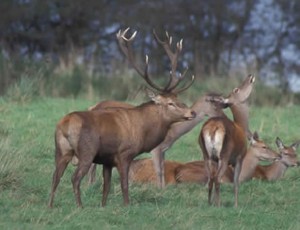Shuklaphanta Reserve allows tourists entry from two points
 Kanchanpur / October 8: The Office of Shuklaphanta Wildlife Reserve has allowed tourists to enter the Reserve from two points in its bid to promote tourism.
Kanchanpur / October 8: The Office of Shuklaphanta Wildlife Reserve has allowed tourists to enter the Reserve from two points in its bid to promote tourism.
The Reserve which had permitted tourists for entrance through its Majgaun Office now has arranged to open another point from Piparaiya zone.
“We have come up with the arrangement to allow tourists to enter the Reserve through two points so as to ease them to visit the tourism sites”, said Chief Conservation Officer of the Reserve, Bed Kumar Dhakal.
He further said that the decision would facilitate tourists coming to see the Multispan suspension bridge beyond the Mahakali River to enter the Reserve. The Reserve has fixed the entrance fee of Rs 50 for Nepali visitors, Rs 500 for SAARC country nationals and Rs 1000 for third country tourists.
Shuklaphanta Wildlife Reserve was managed as a hunting reserve beginning 1969, and was gazetted as a Wildlife Reserve in 1976, covering an area of 305 sq. km. It lies in the extreme south-western section of Nepal’s Terai in Kanchanpur District. A total of 24 mammal species, 350 species of birds, 14 species of fish and 10 species of ectoparasites and biting flies were recorded during various studies of the reserve.
Although the area of the Reserve is small, it supports a wide range of biodiversity which is nationally and globally important. The vegetation types primarily include sal forest, sal savanna, which is part of continuum between climax forest and grassland that is maintained by fire and floods. The reserve supports the largest population of Bengal florican Houbaropsis bengalensis and swamp deer Cervus duvauceli.
The government and tourism entrepreneurs have been taking various initiatives to promote tourism industry of the country as the number of tourists visiting Nepal declined sharply following the massive earthquake of April this year. Although most of the tourism destinations are safe and tourism entrepreneurs have been providing various packages to the tourists, it failed to attract tourists. This is the peak season for tourists. (With inputs from RSS)
